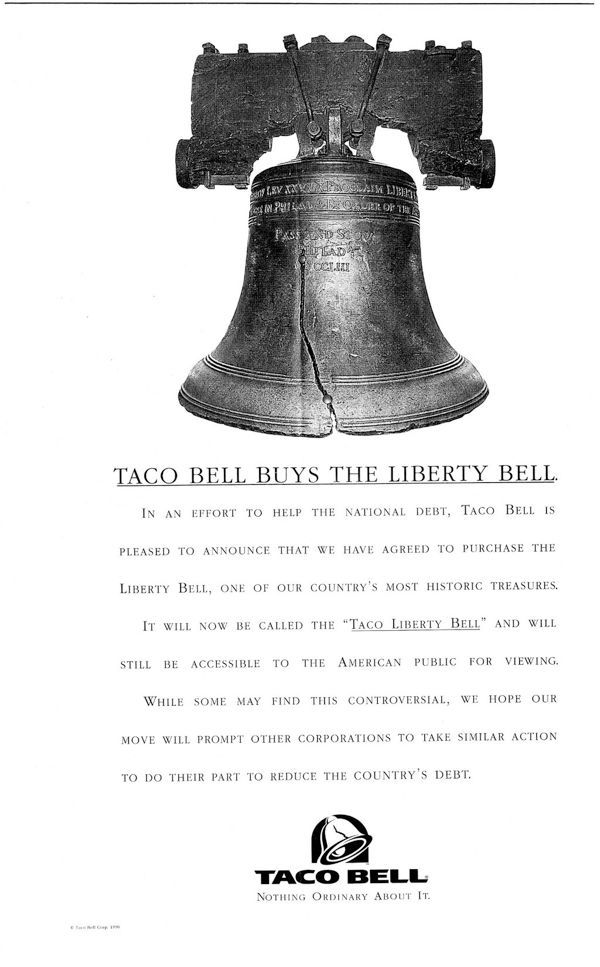Famous Hoaxes: The Taco Liberty Bell

Wikimedia CommonsThe original Taco Liberty Bell ad that ran in several major newspapers around the United States on April 1, 1996.
Taco Bell kicked “creative marketing” up a notch with a clever April Fool’s Day hoax in 1996.
The New York Times, The Washington Post, The Chicago Tribune, and other major American newspapers all featured a full-page ad announcing that the fast food chain had bought the Liberty Bell to settle some of the nation’s debt. The ad then proclaimed that the bell would, from that point forward, be referred to as the “Taco Liberty Bell.”
Even before the clock struck noon, when Taco Bell revealed the truth, thousands of worried Americans had called both Taco Bell headquarters and the National Park Service to find out if the Bell had really been sold.
All in all, this practical joke gave Taco Bell millions of dollars worth of free publicity, making it one of the most famous hoaxes in American history.
The Loch Ness Monster

Hulton Archive/Getty ImagesThe more famous of the two original photos of the Loch Ness Monster, known as “the surgeon’s photograph.” It was taken by Robert Kenneth Wilson and published in the Daily Mail on April 21, 1934.
Out of all of history’s most famous hoaxes, the Loch Ness monster may still reign supreme.
While purported sightings of the strange aquatic beast dwelling in a lake in the Scottish highlands go back to the sixth century, the modern Loch Ness monster craze as we know it started in 1933 when a couple claimed to have seen a 25-foot creature in the lake.
Later that year, the Daily Mail hired hunter Marmaduke Wetherell to track down and find the monster. He came back with evidence of footprints, but he was later discovered to have made them fraudulently with a dried hippo’s foot.
Still, months later in April of 1934, a British doctor named Robert Wilson came forward with photographic evidence of the mysterious monster. One of his photos in particular (above) has become the most enduring basis of the Loch Ness Monster mythology.
And it wasn’t until 1994 that Wetherell’s son-in-law, Christian Spurling, confessed to the hoax. Spurling, Wetherell, Wilson, and an accomplice named Maurice Chamber plotted the entire thing, outfitting a toy submarine with a sea-serpent head.
Wetherell is believed to have done this to get revenge on the Daily Mail, after he was humiliated when his footprint evidence was outed as fake.
And that toy submarine they used, the star of what is likely history’s most famous hoax photo, is, according to Wetherell, probably still somewhere at the bottom of the lake.
Next, check out some more of the best hoaxes in history. Then, focus in on the Nantucket sea serpent hoax of 1937 and the cuneiform cell phone hoax of 2015.





